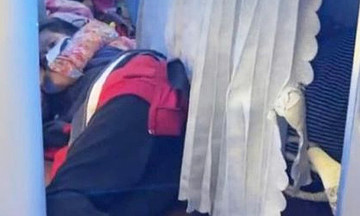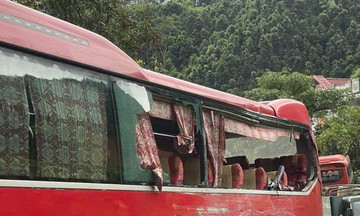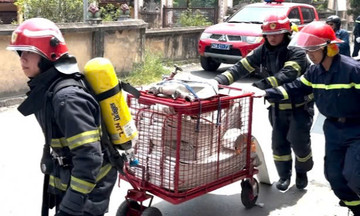A recent proposal for a traffic emissions control project in Ho Chi Minh City suggests establishing a Low Emission Zone (LEZ) in the city center. To manage and monitor vehicles entering and exiting this zone, the project plans to use an ANPR (Automatic Number Plate Recognition) camera system.
From 2026-2032, the city will install 58 ANPR cameras at entry and exit points of the low emission zone (former districts 1 and 3) and at several intersections on major roads to manage non-compliant vehicles. After 2032, the city will install an additional 200 cameras throughout Ho Chi Minh City, with specific locations based on the pollution levels in those areas (some major roads in Thu Duc City, Go Vap, Tan Binh, Phu Nhuan, and former districts 6, 8, and 11). The cameras, planned to be installed at intersections in groups of one to three, will be interconnected to form a perimeter around the low emission zone.
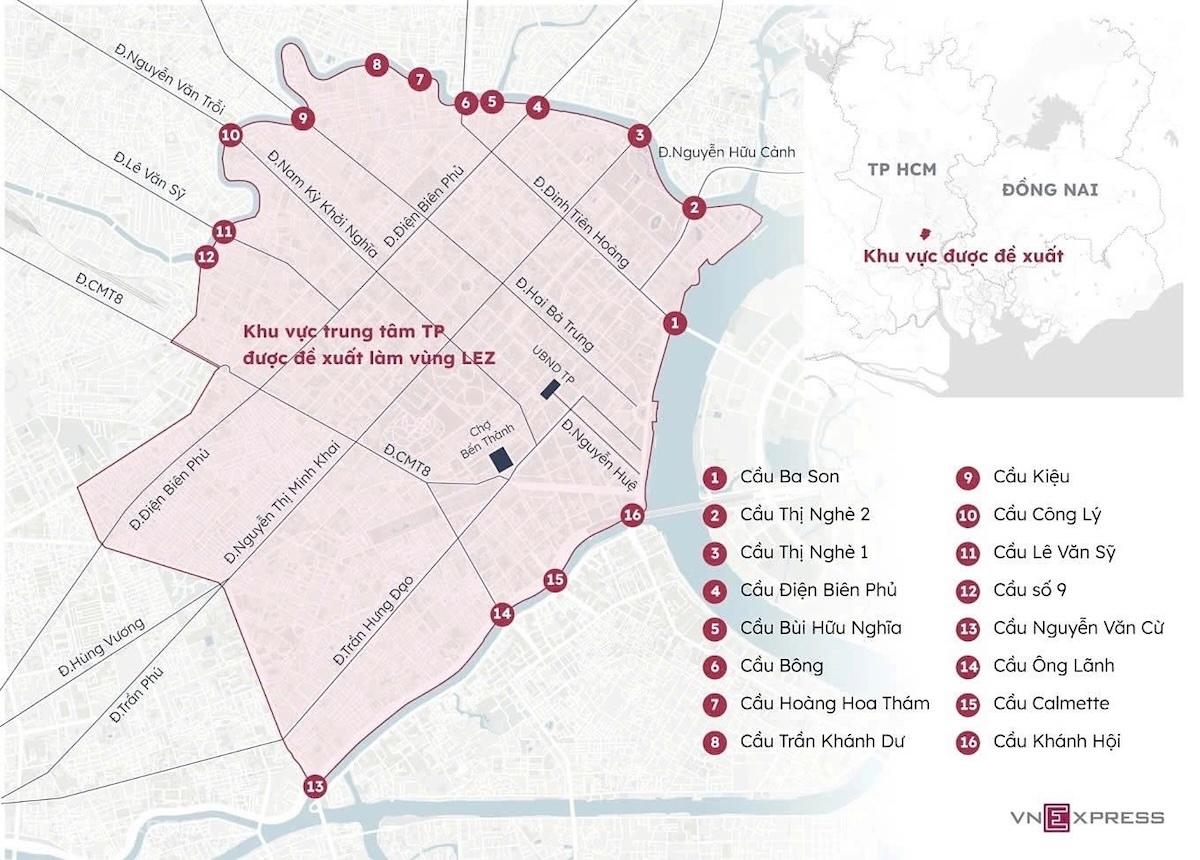 |
License plate recognition cameras will be installed around the city center, proposed as the LEZ during the period 2026-2032. Photo: Khanh Hoang |
License plate recognition cameras will be installed around the city center, proposed as the LEZ during the period 2026-2032. Photo: Khanh Hoang
Bui Hoa An, Deputy Director of the Ho Chi Minh City Department of Construction, stated that the plan to install a camera system to delineate the low emission zone is based on international experience. The department will develop policies to manage and classify vehicles allowed to enter the low emission zone and impose penalties on non-compliant vehicles.
Starting in 2027, Ho Chi Minh City is expected to begin emissions testing for motorcycles. At that time, authorities will have specific regulations for classifying motorcycle emissions. Initially, relevant departments will conduct campaigns and awareness programs to inform people about restricted vehicles in specific areas and routes to encourage compliance. Administrative penalties will be considered later for non-compliance.
The ANPR camera system will capture images of violating vehicles, recording detailed time and location information, and transmitting it to a central data processing and control center. The center will then compare the data and verify violations based on inspection data (Euro standards, year of manufacture, vehicle owner, etc.) and the designated LEZ. Once the violation information is verified, the system will automatically generate a ticket and send a notification via email, VNeID, or postal mail.
In the future, the ANPR camera system will also be connected to the city's traffic control center, which has about 900 traffic monitoring and coordination cameras, sharing the same database to reduce operating and installation costs. Automated monitoring will also eliminate the human element, prevent negativity, and ensure fairness.
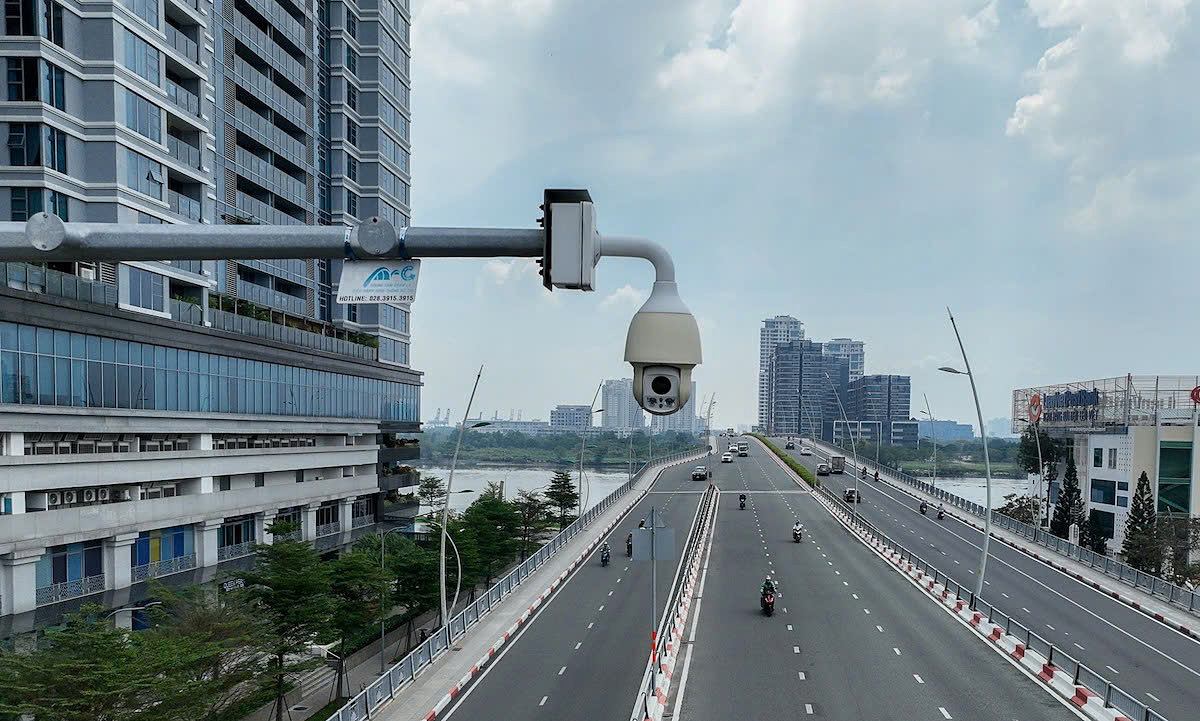 |
Traffic surveillance cameras on Thu Thiem Bridge, connecting former Binh Thanh District with Thu Thiem New Urban Area. Photo: Nguyen Hien |
Traffic surveillance cameras on Thu Thiem Bridge, connecting former Binh Thanh District with Thu Thiem New Urban Area. Photo: Nguyen Hien
According to Mr. An, penalizing non-compliant vehicles entering low emission zones has been implemented in many countries. In Antwerp, Belgium, ANPR cameras have been used since 2017 to issue fines of 150-250 euros for first and second violations. In Seoul, South Korea, fines of 250,000 won (equivalent to 212 USD) have been imposed on non-compliant vehicles in green traffic zones since 2019.
From a vehicle management perspective, a representative of the Traffic Police Department stated that monitoring non-compliant vehicles using ANPR cameras is feasible, as this type of equipment has become widespread. Traffic police in provinces and cities are using license plate recognition camera systems to issue automated tickets. The equipment can identify traffic violations and is connected to the vehicle registration database. Using the vehicle's license plate image and violation information, the system can retrieve the vehicle owner's information for processing.
Previously, cameras could only process speed violations. Now, with the addition of artificial intelligence (AI), they can automatically identify over 20 traffic violations. According to the Traffic Police Department representative, with sufficient database and regulations for establishing low emission zones, authorities can determine the vehicle's manufacturing year and whether it is prohibited from entering restricted areas, thereby determining appropriate penalties.
However, the project team needs to distinguish between cameras that only recognize license plates and those that integrate traffic violation recognition technology to design an appropriate monitoring system.
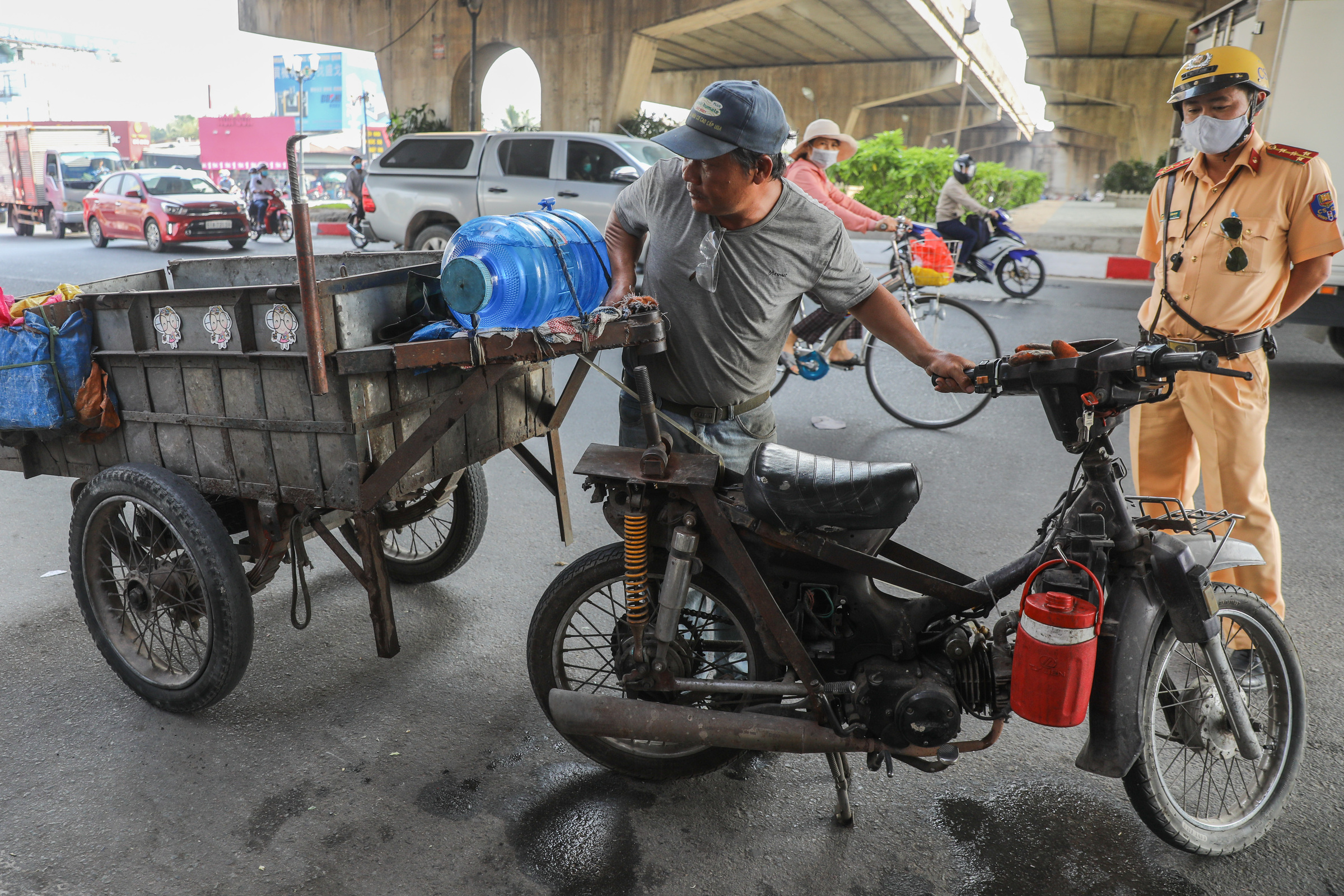 |
Ho Chi Minh City Traffic Police during a campaign to address dilapidated vehicles in the Binh Phuoc overpass area (former Thu Duc City). Photo: Quynh Tran |
Ho Chi Minh City Traffic Police during a campaign to address dilapidated vehicles in the Binh Phuoc overpass area (former Thu Duc City). Photo: Quynh Tran
Dr. Pham Tran Hai, Deputy Head of the Urban Management Research Department (Ho Chi Minh City Development Research Institute), agreed that the license plate recognition camera system can create a perimeter around the low emission zone to monitor vehicles.
He cited the example of Singapore, where initially, when establishing a green zone in the city center to collect fees and restrict polluting vehicles, barriers were used to block entrances. Later, they switched to installing an ANPR camera system. In China, authorities differentiate emission levels by using various colors and sizes of license plates for easy camera identification.
According to Mr. Hai, Ho Chi Minh City can learn from other countries to create a suitable model, such as Singapore, which in recent years has been researching the use of chips installed on each vehicle connected to satellites to manage traffic in specific zones more effectively.
Besides feasibility, some opinions suggest potential challenges in implementing the project, such as the lack of defined emission standards for motorcycles and vehicles without official owners. The large number of motorcycles in Ho Chi Minh City, over 9 million with varying quality, makes it difficult to control non-compliant motorcycles entering the city center.
Regarding this issue, Deputy Director of the Department of Construction, Bui Hoa An, said the department is considering and incorporating feedback to develop policies that minimize the impact on people's lives and the economy. "We will develop regulations to both reduce environmental pollution and ensure convenient travel for citizens," Mr. An said.
Dinh Van








